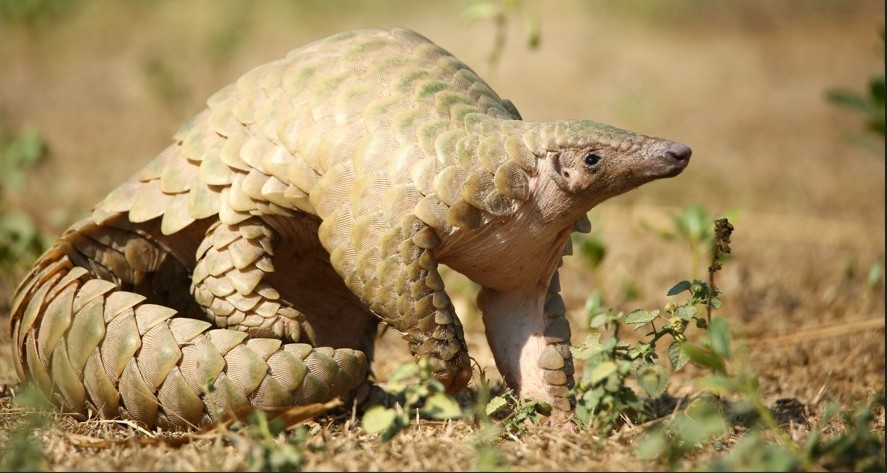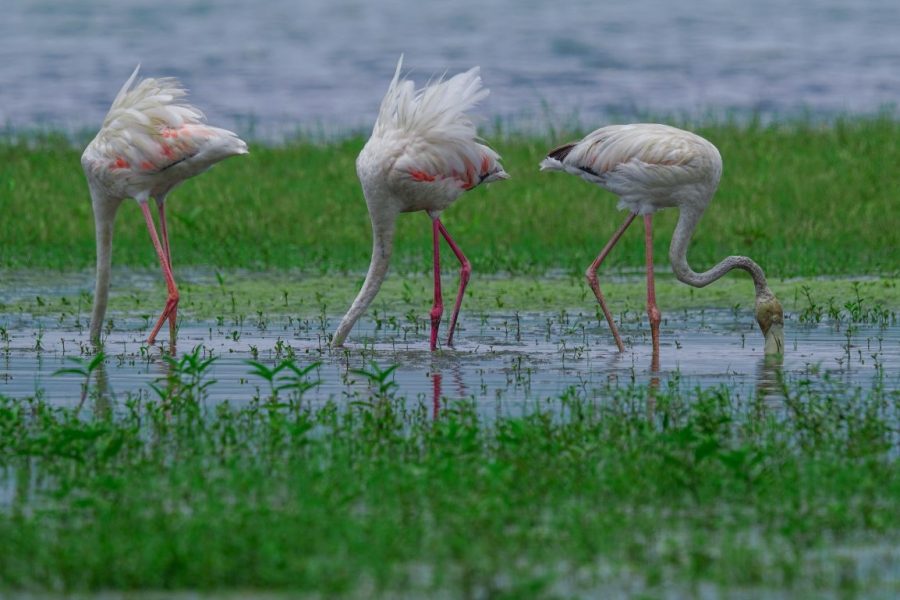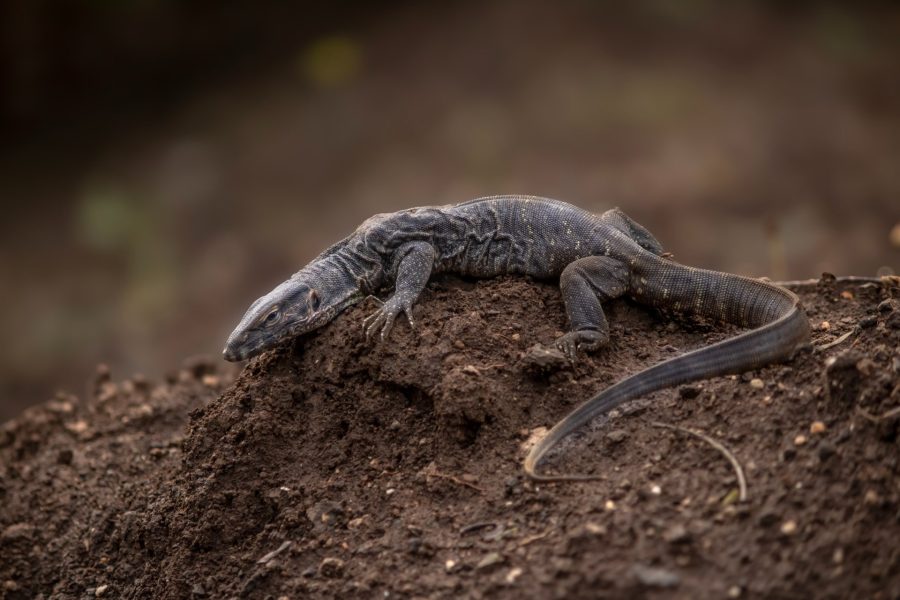Wildlife SOS introduces a new series “Things You Didn’t Know About” that explores fascinating and lesser-known facts about various species. Our writers will spotlight one inhabitant of the wild, unveiling its unique characteristics and roles in the ecosystem. In this feature, we shed light on the most trafficked mammal in the world — pangolins.
The pangolin is found in the forests and grasslands of Asia and Sub-Saharan Africa. It is also known as the scaly anteater, despite being more closely related to cats, dogs and bears! There are eight species of this elusive animal, out of which four reside in Asia: the Chinese pangolin (Manis pentadactyla), which inhabits regions across Bhutan, Nepal, Laos, Vietnam, Thailand, Myanmar, Taiwan, and China; the Indian pangolin (Manis crassicaudata), found in India, Nepal, Pakistan, and Sri Lanka; the Philippine pangolin (Manis culionensis), native to the Philippines; and the Sunda pangolin (Manis javanica), distributed across Indonesia, Malaysia, Laos, Thailand, Myanmar, Singapore, and Vietnam.
Looks That Deceive, Secrets That Amaze
Pangolins spend the majority of their waking hours in search of food and shelter. As insectivores, they primarily rely on ants and termites, and supplement these with various other invertebrates like bee larvae, worms, flies, and crickets. Despite being nocturnal hunters, pangolins have limited vision and rely heavily on their keen sense of smell to locate prey. With a small head, elongated snout, and sturdy front claws, a pangolin can effortlessly dig into mounds, stumps, and fallen branches. To avoid intrusion by ants and to prevent escape attempts by termites, pangolins have evolved specialised muscles in their ears and noses to seal them shut during digging.
Pangolins lack teeth, but this is compensated by a specialised stomach lined with keratinous spines, which enables them to also consume stones! These features in their stomachs can grind and crush solid mineral matter for easier digestion. Additionally, they also possess remarkably long, sticky tongues that can capture insects that are deep within crevices. These tongues can extend up to half the length of the pangolin’s body!
Anatomically equipped, pangolins have an insurmountable love for digging. These mammals are capable of creating large burrows, sometimes up to 10 metres in depth, which they use for sleeping and mating. Some pangolins have been known to excavate up to 15 burrows per night in the quest to find ample insects to consume! As enthused as they are about digging, pangolins are also arboreal when they need to be. They utilise their strong, semi-prehensile tails to climb trees in order to seek shelter in its hollows or to access ant nests. They are surprisingly good swimmers as well, and can sometimes be seen taking a leisurely dip.
Vital yet Vanishing
Pangolins play a vital role in maintaining ecosystem balance through their unique dietary habits and digging behaviours. They have a huge appetite and help keep insect populations in check across the habitats they occupy. Researchers estimate that pangolins consume approximately 70 million insects annually, which equates to nearly 2,00,000 insects per day. This is a significant consumption that helps regulate the food chain.
As pangolins dig the ground for prey, they also aerate the soil, which increases its water and nutrition absorption capacity. Abandoned burrows subsequently provide shelter and habitat for various other animals, benefitting the biodiversity.
Despite their extensive geographical presence, these shy animals face a dire threat of extinction. They are among the most heavily trafficked species globally, primarily by China and Vietnam, due to the relentless demand for their meat, keratin-rich scales, and body parts. Illegal trade reached catastrophic proportions when over a million pangolins were smuggled from 2000 to 2013, and such a figure can be attributed to belief in the medicinal qualities of pangolin parts. Despite being classified under the highest level of protection under CITES (Convention on International Trade in Endangered Species of Wild Fauna and Flora) in 2016, illicit trade of pangolins persists. In China, 11.9 tonnes of pangolin scales, equivalent to around 20,000 pangolins, were seized in 2017. According to a 2020 study, approximately 1,95,000 pangolins were trafficked in 2019 for their scales alone.
Efforts to protect pangolins have been hampered by inadequate public awareness, insufficient political intervention, and the complexity of combating the illegal wildlife trade. However, Wildlife SOS is stepping up to make a difference. In a recent rescue operation, Wildlife SOS successfully saved a stranded pangolin found on the Delhi to Agra National Highway.
The rescue was initiated after a concerned caller alerted Wildlife SOS on their emergency helpline. The Wildlife SOS Rapid Response Unit swiftly mobilised with the necessary rescue gear, and located the pangolin. Identified as an adult female, the pangolin was safely transported to the Wildlife SOS treatment facility.
Upon its arrival, the pangolin underwent a thorough medical examination, revealing heavy infestations of ticks. The dedicated team at Wildlife SOS meticulously treated the pangolin, removing the ticks to ensure her well-being. After a day of close observation, the rescued pangolin was released back into its natural habitat, contributing to the ongoing efforts to conserve this critically endangered species.
Pangolins are protected under Schedule I of the Wildlife (Protection) Act, 1972, highlighting the importance of concerted conservation efforts this animal requires. Immediate action is needed to combat the illegal wildlife trade, raise public awareness, and safeguard the habitats crucial for pangolin survival.
Wildlife SOS operates its emergency rescue helpline in four regions in India. If you see an animal that needs help, please connect with us here:
Delhi NCT Region: +91-9871963535
Agra Region (UP): +91-9917109666
Vadodara Region: +91-9825011117
J&K Region:+91 7006692300, +91 9419778280
Elephant Helpline: +91-9971699727





